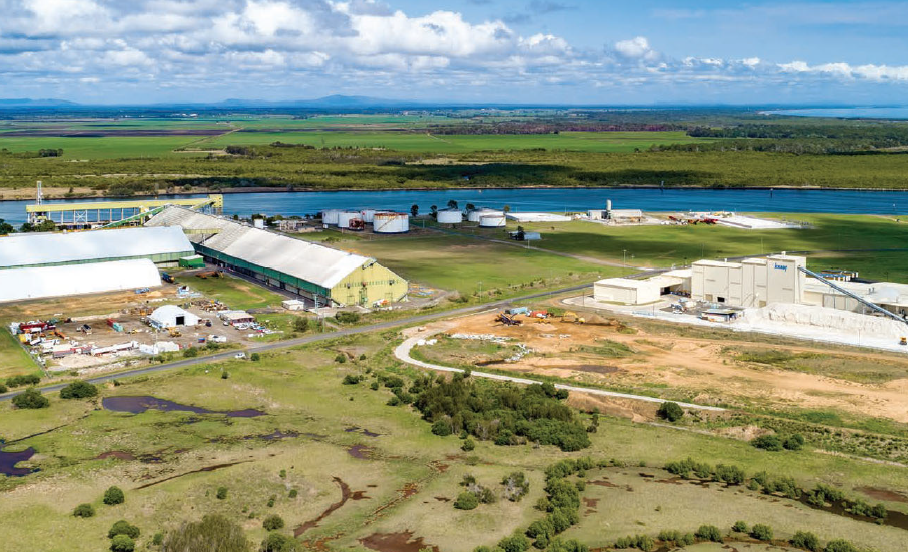
The Port of Bundaberg recorded a 27.7 per cent reduction in throughput last financial year due to lower sugar exports but prospects are bright, according to Gladstone Ports Corporation (GPC).
The information is contained in the organisation's 2019-20 annual report, which predicts volumes will rise this year.
The Port of Bundaberg recorded throughput of 391.9 kilotonne (kt) during 2019-20, the report says. In 2018-19 it was 542.28kt.
While sugar exports declined, the molasses trade showed an increase of 10.5 per cent and wood pellets remained steady.
“In 2020-21 it is expected that the throughput for the Port of Bundaberg will continue to grow with the ongoing development of the silica sand, gypsum and wood pellet markets,” the report states.
“GPC continues to explore other opportunities for future trade and expects to see an increase in dry bulk throughput with key asset development.
“The Port of Bundaberg is forecast for 576kt in 2020-21.”
In 2019-20, 36 pilots undertook 4958 pilot movements — 4766 in Gladstone, 146 in Rockhampton and 46 in Bundaberg.
The report says the future looks bright for the Port of Bundaberg following significant investment in several key infrastructure projects throughout 2019-20, demonstrating GPC’s confidence in the port’s economic potential.
“Notably, GPC partnered with Australian Bauxite Limited and entered into a Memorandum of Understanding in September 2019 to investigate the feasibility of constructing and operating a 1Mpta bauxite facility at the port,” the document says.
“As an emerging Australian bauxite producer with a pipeline for development, the proposed new facility will bring new trade to the region.”
Other key projects at Bundaberg
- Detailed business case for Common User Infrastructure in partnership with Sugar Terminals Limited (STL). This will consider the design and construction of infrastructure to diversify and future-proof port operations.
- Acquisition of the decommissioned Stolthaven fuel terminal to facilitate the future development of bulk storage and handling facilities.
- Long-term lease agreement with Pacific Marine Base Bundaberg and its parent company Pacific Tug Group to develop the marine industry in the areas of marine maintenance and repair operations, break bulk handling, and cargo and stores handling.
- Progression of the impact assessment for the Gateway Marina Development at Burnett Heads Boat Harbour to develop a world-class marina with residential, tourism and commercial facilities.
- $2.82 million in road and drainage updates being managed by Bundaberg Regional Council. Additional funds of $2.51 million are being provided by the Australian Government’s Heavy Vehicle Safety and Productivity Program to enable safer transit of heavy vehicles through the port precinct.
- Completion of the Mangrove Boardwalk Stage Two in partnership with Gidarjil Development Corporation.
- Upgrade of the port administration building and surrounds.
Port of Bundaberg Strategic Precinct Outlook
- The Port of Bundaberg Strategic Precinct Outlook reflects a joint study with the Bundaberg Regional Council and the Wide Bay Burnett Regional Organisation of Councils, into the region’s trade potential.
- Growing urbanisation and wealth in Asia, combined with rising food security, will continue to drive demand for agriculture, natural resources, tourism and other new, value-added products through the Port of Bundaberg — key opportunities highlighted in the Precinct Outlook.
- Released in September 2019, the Port of Bundaberg Precinct Outlook was circulated to key stakeholders and the community so they could comment on the proposed long-term future direction of the port.

Port of Bundaberg Land Use Plan
- Gladstone Ports Corporation commenced community consultation on the plan through a new, online engagement platform in June 2020. The Land Use Plan is a statutory instrument used to regulate development. A new plan is prepared every eight years under the provisions of the Transport Infrastructure Act 1994.
- The Land Use Plan identifies strategic port land to be used for port and related industry development, and provides a framework for us to assess and approve development on the land under the Planning Act 2017.
- Following community consultation, the draft Land Use Plan will be reviewed and finalised before release in late 2020.
Port of Bundaberg Common User Infrastructure
GPC undertook a detailed business case for the design and construction of Common User Infrastructure developed in partnership with Sugar Terminals Limited (STL).
The Common User Infrastructure was identified as a key infrastructure requirement to further develop trade in the Wide Bay Burnett region.
“This infrastructure will help us increase diversification, prepare our port operations for the future, and create more income and job opportunities,” the annual report says.
“GPC and STL signed a Memorandum of Understanding in September 2019. This was an important first step in investigating the options to add new linkages into existing infrastructure.
“It is proposed the Common User Infrastructure would make use of the existing STL owned Sir Thomas Hiley Wharf and ship-loading facilities to diversify the current sugar industry resources.”




